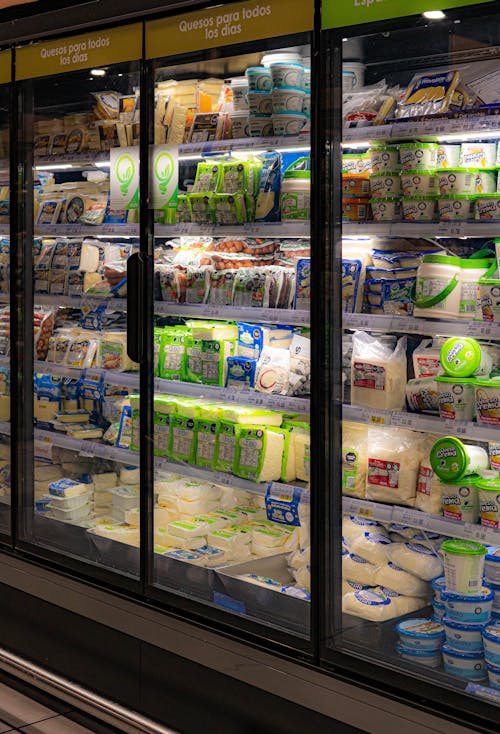Maximizing Efficiency: How to Optimize Your Heat Exchanger Performance

I see heat exchangers as the backbone of energy efficiency in many industries. They transfer heat between fluids, reducing energy waste and lowering costs. However, maintaining their performance can be challenging. Fouling often reduces heat transfer efficiency when dirt and debris build up on surfaces. Contaminated fluids can cause scaling and corrosion, which further impacts efficiency. Proper fluid flow management is also essential. Uneven distribution creates hotspots, limiting heat transfer and increasing maintenance needs. Regular cleaning and inspections help prevent these issues. Companies like senjun, specializing in wire tube condensers and advanced heat exchangers, provide innovative solutions to tackle these challenges effectively.
Key Takeaways
- Taking care of heat exchangers is very important. Clean and check them often to stop damage and keep them working well.
- Use smart cleaning methods like online or chemical cleaning. These ways keep them clean without stopping work and save time.
- Use tools to watch how they work. Sensors can show real-time data like temperature, flow, and pressure. This helps fix problems quickly and work better.
- Plan ahead for repairs. Look at old data to find problems early. This makes the equipment last longer and avoids sudden breakdowns.
- Pick strong materials and coatings for heat exchangers. These make them last longer, work better, and save money while helping the environment.
Maintenance Strategies for Heat Exchangers
Cleaning Methods
Online Cleaning Techniques
Online cleaning allows me to clean heat exchangers without shutting down operations. Techniques like ultrasonic cleaning are highly effective, achieving nearly 100% efficiency while consuming minimal water. This method is cost-effective and ideal for maintaining performance during continuous use. Another option is chemical cleaning, which can remove fouling with varying effectiveness (30-85%) depending on the procedure. These approaches ensure uninterrupted operation while addressing fouling issues.
Offline Cleaning Approaches
Offline cleaning involves halting operations to perform thorough cleaning. Hydroblasting is a common method, offering about 85% effectiveness. It uses high-pressure water jets to remove debris but can be labor-intensive. Thermal cleaning is another offline technique, particularly effective for organic fouling. It requires specialized high-temperature ovens and achieves up to 100% efficiency. Offline methods are suitable for deep cleaning when performance has significantly declined.
Manual Cleaning Best Practices
Manual cleaning remains a practical option for smaller heat exchangers or specific fouling types. I recommend using soft brushes or non-abrasive tools to avoid damaging surfaces. Always follow manufacturer guidelines to ensure safety and effectiveness. This method is cost-efficient but requires skilled personnel to achieve optimal results.
Monitoring and Inspection
Tools for Performance Monitoring
Monitoring tools play a vital role in maintaining heat exchanger efficiency. Distributed temperature sensors provide real-time thermal performance data. Flow rate sensors ensure balanced fluid distribution, while pressure sensors detect operational challenges. These tools help establish benchmarks and monitor energy balance effectively.
Importance of Routine Inspections
Routine inspections are essential for identifying issues like fouling, corrosion, or leaks early. I always emphasize the importance of visual inspections and fluid testing to detect contamination. Regular checks prevent minor problems from escalating, ensuring the longevity and reliability of heat exchangers.
Preventive Maintenance
Scheduling Maintenance Intervals
Preventive maintenance involves scheduling regular intervals for cleaning, inspections, and repairs. I find that adhering to a maintenance schedule reduces the risk of unexpected failures. It ensures consistent performance and minimizes downtime.
Benefits of Predictive Maintenance
Predictive maintenance uses advanced analytics to identify potential issues before they occur. This approach improves efficiency, extends equipment lifespan, and reduces downtime. It also enhances safety and lowers repair costs. Companies like senjun, with expertise in wire tube condensers and copper aluminum fin heat exchangers, can provide tailored solutions to support predictive maintenance strategies.
Preventing Fouling and Corrosion

Understanding Fouling
Types of Fouling and Their Effects
Fouling in heat exchangers happens when unwanted materials accumulate on surfaces, reducing efficiency. I’ve seen several causes of fouling, including:
- Mineral impurities like calcium carbonate and iron, which lead to scaling.
- Operating conditions such as high heat, low pH, and high-velocity flow, which accelerate fouling.
- Contaminants and microorganisms like airborne pollutants and bacteria, which form films on surfaces.
These issues can cause reduced heat transfer, local hot spots, and even equipment breakdowns. Frequent repairs and higher maintenance costs often follow.
Strategies to Minimize Fouling
To minimize fouling, I recommend understanding its mechanisms—mechanical, chemical, or biological. Regular cleaning and inspections are essential. Optimizing operating conditions, such as controlling fluid velocity and temperature, also helps. Using inhibitors or biocides prevents chemical reactions and biological growth. Advanced coatings and corrosion-resistant materials further reduce fouling risks. Installing filters or separators to remove contaminants is another effective strategy.
Corrosion Prevention
Protective Coatings and Materials
Corrosion can severely damage heat exchangers. I’ve found that using protective coatings and materials is one of the best ways to prevent it. For example:
| Material/Coating | Description |
|---|---|
| Corrosion-resistant alloy | Isolates the substrate from the environment to prevent corrosion. |
| IGS HVTS® coating | Upgrades internal metal alloy without creating heat-affected zones. |
These coatings act as barriers, shielding the base material from chemicals, high temperatures, and abrasion.
Optimizing Operating Conditions
Maintaining optimal operating conditions is another way to reduce corrosion. I always monitor flow rates to ensure effective heat transfer. Avoiding extreme temperatures or pressures also helps. Control systems can stabilize conditions, preventing unnecessary wear and tear.
Monitoring Fluid Quality
Preventing Blockages and Fouling
Monitoring fluid quality is critical. Contaminants in fluids can lead to blockages and fouling. I recommend using filters to remove debris and testing fluids regularly to maintain cleanliness. This ensures smooth operation and reduces maintenance needs.
Ensuring Proper Flow Distribution
Proper flow distribution is essential for efficient heat exchanger performance. Uneven flow creates hot spots, reducing heat transfer. Thoughtful design and distribution enhancement devices can help achieve uniform flow, maximizing efficiency.
Companies like senjun, with expertise in wire tube condensers and copper aluminum fin heat exchangers, offer innovative solutions to address fouling and corrosion challenges. Their products, used in refrigerators, freezers, and medical ultra-low temperature refrigerators, are designed to deliver long-lasting performance.
Advanced Technologies for Heat Exchangers

Coatings and Surface Treatments
Chemical Vapor Deposition (CVD) Coatings
I’ve seen how advanced coatings like Chemical Vapor Deposition (CVD) revolutionize heat exchanger performance. These coatings create a thin, uniform layer on surfaces, enhancing resistance to corrosion and fouling. They also improve thermal conductivity, ensuring efficient heat transfer. For industries dealing with harsh chemicals or extreme temperatures, CVD coatings provide a reliable solution to extend equipment lifespan.
Anti-Corrosion and Anti-Fouling Innovations
Modern coatings go beyond basic protection. Researchers have developed hydrophobic and oleophobic coatings that repel water and oil, reducing fouling by creating a slippery barrier. HeatX, a nanocomposite surface treatment, prevents bio-fouling and corrosion while maintaining heat transfer efficiency. I’ve also come across SilcoTek’s Dursan coating, which showed a 74% improvement in pressure drop during synthetic seawater tests. These innovations ensure long-term performance and reduce maintenance needs.
Smart Monitoring Systems
IoT-Enabled Sensors for Real-Time Data
IoT-enabled sensors transform how I monitor heat exchanger performance. Distributed temperature sensors provide real-time thermal data, while flow rate sensors ensure proper fluid distribution. Pressure sensors detect deviations, allowing timely interventions. These sensors integrate seamlessly with customizable dashboards, offering early warnings and minimizing unplanned maintenance. This technology optimizes plant yield and enhances operational efficiency.
| Feature | Description |
|---|---|
| Sensor Data Integration | Continuous monitoring of temperature, pressure, and flow rates for real-time data analysis. |
| Real-Time Data Integration | Enhances predictive accuracy through continuous data analysis using IoT technology. |
| Customizable Dashboards | Displays key health data of heat exchangers for effective monitoring and maintenance planning. |
| Early Warning System | Provides advance notice of potential failure events, allowing for timely interventions. |
Predictive Analytics for Maintenance
Predictive analytics takes monitoring a step further. By analyzing historical data, I can foresee maintenance needs and extend intervals between cleanings. For example, XMPro’s solution uses IoT sensors and machine learning to predict fouling and recommend proactive maintenance. This approach minimizes downtime, extends equipment lifespan, and ensures consistent performance.
Enhanced Heat Exchanger Designs
Compact and High-Efficiency Models
Compact heat exchangers save space and improve flexibility in crowded facilities. Plate heat exchangers, for instance, offer a large heat transfer surface in a small footprint, making them ideal for HVAC systems. These designs reduce energy consumption, lower operational costs, and support sustainability goals. Lightweight construction also cuts transportation costs, adding to their appeal.
Materials with Superior Thermal Conductivity
Materials play a critical role in heat exchanger efficiency. Advanced options like graphene and carbon nanotubes offer exceptional thermal conductivity and durability. Metals like copper and aluminum remain popular for their excellent heat transfer properties. High-performance alloys and composites provide additional corrosion resistance, making them suitable for challenging environments. These materials ensure rapid and efficient heat transfer, enhancing overall performance.
Companies like senjun lead the way in adopting these advanced technologies. Their expertise in wire tube condensers and copper aluminum fin heat exchangers supports industries ranging from refrigeration to medical ultra-low temperature applications. By integrating cutting-edge designs and materials, senjun delivers reliable and efficient solutions tailored to diverse needs.
Extending the Lifespan of Heat Exchangers
Proper Installation Practices
Ensuring Correct Alignment and Connections
Proper installation is the foundation for extending the lifespan of any heat exchanger. I always ensure correct alignment and secure connections during installation. Misalignment can lead to uneven heat transfer, which reduces efficiency and increases wear. Following the manufacturer’s guidelines is critical. These instructions provide the exact steps to avoid errors. I also recommend hiring skilled technicians for installation and commissioning. Their expertise ensures the system operates as intended from the start.
Avoiding Common Installation Errors
Common installation errors, like improper sealing or incorrect positioning, can cause leaks or operational inefficiencies. I’ve seen how these mistakes lead to costly repairs and downtime. To avoid such issues, I double-check all connections and use high-quality materials during installation. Taking these precautions ensures the system runs smoothly and reliably.
Operating Within Design Parameters
Managing Pressure and Temperature Limits
Operating within the design parameters of a heat exchanger is essential for its longevity. I monitor pressure and temperature levels closely to prevent damage. Maintaining proper conditions minimizes fouling and ensures efficient heat transfer. Design features like corrugated tubes enhance turbulence, reducing deposition fouling. These features also make inspection and cleaning easier, helping maintain operational integrity.
Avoiding Overloading and Stress
Overloading a heat exchanger with excessive pressure or temperature can cause stress and lead to premature failure. I always operate the system within its specified limits to avoid unnecessary wear. Using control systems to stabilize conditions helps prevent sudden spikes that could damage the equipment.
Long-Term Maintenance and Upgrades
Retrofitting with Modern Components
Retrofitting older heat exchangers with modern components offers several advantages. I’ve seen how heat recovery systems capture and reuse heat from exhaust gases, reducing energy consumption and carbon emissions. Upgraded components also improve heat transfer efficiency, allowing processes to meet temperature requirements with less energy. This reduces operating costs and supports sustainability goals.
Replacing Worn-Out Parts Proactively
Proactive replacement of worn-out parts is another strategy I use to extend equipment lifespan. Routine inspections help me identify components nearing the end of their service life. Replacing these parts before they fail prevents unexpected breakdowns and ensures consistent performance. Keeping a detailed record of maintenance activities also helps streamline this process.
By following these practices, I’ve successfully extended the lifespan of heat exchangers in various applications. Companies like senjun, with expertise in wire tube condensers and copper aluminum fin heat exchangers, provide innovative solutions for industries such as refrigeration and medical ultra-low temperature systems. Their products are designed for durability and efficiency, making them a reliable choice for long-term performance.
senjun’s Contribution to Heat Exchanger Efficiency
About senjun
Overview of Ningbo Senjun New Materials Co., Ltd.
Ningbo Senjun New Materials Co., Ltd. focuses on developing and producing wire tube condensers and copper aluminum fin heat exchangers. Their products serve a wide range of industries, including refrigeration, medical, and commercial applications. I’ve noticed how their innovative designs improve thermal performance while maintaining durability. By combining advanced materials with cutting-edge manufacturing techniques, senjun ensures reliable and efficient solutions tailored to specific needs.
Expertise in Wire Tube Condensers and Copper Aluminum Fin Heat Exchangers
Senjun’s expertise lies in creating high-performance heat exchangers. Their copper tube aluminum fin condensers stand out for their excellent thermal conductivity and lightweight design. The aluminum fins enhance heat dissipation, even in compact spaces. I’ve also seen how their Bundy tubes, made from copper-coated steel, balance cost, durability, and efficiency. These features make senjun a leader in material science and thermal performance.
senjun’s Product Applications
Refrigerators, Freezers, and Display Cabinets
Senjun’s heat exchangers play a critical role in refrigeration systems. Their wire tube condensers and copper aluminum fin designs ensure efficient cooling in refrigerators, freezers, and display cabinets. I’ve observed how these products maintain consistent performance, even under demanding conditions. Their compact and modular structures make them easy to install and maintain, reducing operational costs.
Medical Ultra-Low Temperature Refrigerators and Ice Makers
In the medical field, senjun’s products support ultra-low temperature refrigerators and ice makers. These applications require precise temperature control and reliability. I’ve found that senjun’s corrosion-resistant materials and advanced coatings ensure long-lasting performance, even in harsh environments. Their designs optimize energy use, making them ideal for critical medical applications.
senjun’s Innovations
Advanced Materials for Corrosion Resistance
Senjun has introduced advanced materials and coatings to combat corrosion. Their corrosion-resistant coatings protect condensers from harsh environments, extending operational life. I’ve seen how these coatings prevent moisture buildup in freezers, ensuring consistent performance. By using durable materials like copper alloys and aluminum fins, senjun delivers solutions that withstand challenging conditions.
High-Efficiency Heat Exchanger Designs
Senjun’s heat exchangers outperform traditional models with their compact structure and superior heat transfer capabilities. They use high-quality materials for durability and energy conservation. I’ve noticed how these designs lower operational costs and reduce carbon footprints. Their computer-aided designs ensure optimal geometries, enhancing thermal efficiency and reliability.
| Advanced Material/Technique | Benefit |
|---|---|
| Copper Alloys | Improved corrosion resistance and thermal conductivity for durability. |
| Aluminum Fins | Enhanced heat dissipation with optimized design. |
| Laser Welding | Precise joints that reduce leaks and boost efficiency. |
| Computer-Aided Design | Ensures optimal geometries for better heat transfer and material usage. |
| Corrosion-resistant coatings | Protect condensers from harsh environments, extending operational life. |
Senjun’s commitment to innovation and quality makes them a trusted partner in heat exchanger technology. Their products deliver consistent performance across industries, from refrigeration to medical applications.
Optimizing heat exchanger performance ensures consistent efficiency and reliability. Regular maintenance prevents fouling and corrosion, reducing repair costs and extending equipment lifespan. Advanced technologies, like IoT-enabled sensors and predictive analytics, enhance operational efficiency and minimize downtime.
Improving heat exchanger efficiency also benefits the environment. It reduces greenhouse gas emissions by conserving energy and lowering fuel consumption. Industries can reuse waste heat from processes, decreasing reliance on fossil fuels and cutting carbon footprints. These practices align with sustainable goals, promoting eco-friendly operations.
I encourage you to implement these strategies and explore senjun’s innovative solutions. Their expertise in wire tube condensers and copper aluminum fin heat exchangers supports diverse applications, from refrigeration to medical systems. Senjun’s commitment to quality ensures tailored solutions for your needs.
FAQ
What is the primary purpose of a heat exchanger?
A heat exchanger transfers heat between two fluids without mixing them. I’ve seen them used in industries like refrigeration, HVAC, and medical systems to improve energy efficiency and reduce operational costs.
How often should I clean my heat exchanger?
I recommend cleaning heat exchangers at least once a year. However, the frequency depends on operating conditions and fouling levels. Regular cleaning ensures optimal performance and prevents costly repairs.
What makes senjun’s heat exchangers unique?
Senjun’s heat exchangers stand out for their advanced materials and innovative designs. Their copper aluminum fin heat exchangers offer excellent thermal conductivity and durability. I’ve noticed their products perform reliably in demanding applications like medical ultra-low temperature refrigerators.
How can I prevent fouling in my heat exchanger?
To prevent fouling, I suggest using filters to remove contaminants and maintaining proper fluid flow. Regular inspections and senjun’s corrosion-resistant coatings also help reduce fouling risks.
Why is monitoring fluid quality important?
Monitoring fluid quality prevents blockages and ensures smooth operation. I always test fluids regularly to maintain cleanliness. Senjun’s heat exchangers, designed for efficiency, benefit greatly from clean and balanced fluid distribution.


















